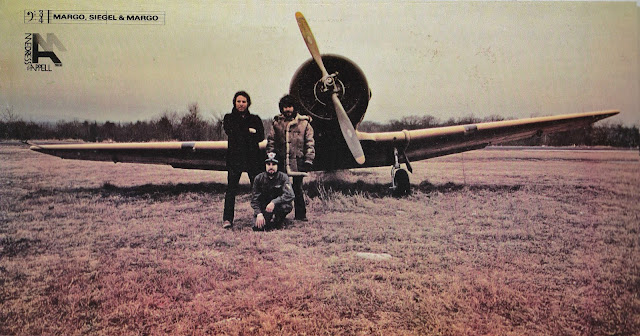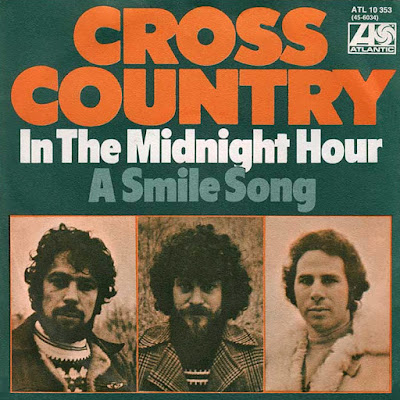Bitrate: 256
mp3
Ripped by: ChrisGoesRock
Artwork Included
Source: Japan SHM-CD Remaster
Based in the southern states of America, hard rock band Hydra formed in the early 70s around a line-up of Wayne Bruce (vocals, guitar), Spencer Kirkpatrick (guitar), Orville Davis (bass) and Steve Pace (drums). Signed to the Allman Brothers and Marshall Tucker Band’s record label, Capricorn Records, they made their debut in 1974 with a self-titled collection that drew heavily on Lynyrd Skynyrd’s southern boogie tradition, but also added elaborate pop hooks and disciplined rhythmic codas.
Songs such as ‘Glitter Queen’ won them a fervent fanbase, though the subsequent Land Of Money, a more abrasive collection, was less successful. By the advent of Rock The World Davis had departed to join Rex and the resultant instability stalled the group’s progress.
Hydra is an American Southern rock band founded in the late 1960s by Spencer Kirkpatrick (guitar), Wayne Bruce (vocals and guitar), and Steve Pace (drums). In 1977, it became a three-piece band (with Wayne Bruce now on bass) and the band broke up later that year. It released three albums, Hydra (1974), Land of Money (1975) and Rock The World (1977). In 2005, the band reunited for two shows (with Vickery on bass). A live album, Hydra: Live After All These Years was released.
Pace and Kirkpatrick first played together in 1968 in the band Strange Brew. Wayne Bruce was playing with the band Nickelodian and accepted the offer to join Pace and Kirkpatrick in the short-lived Noah Mayflower. These three remained together in the band Osmosis until 1969 when, after enlisting a succession of bassists, Hydra finally emerged with the inclusion of Trip Burgess in 1970, and later Orville Davis in 1971.
Orville remained with Hydra on their first two LP's before leaving the group to join the hard rock outfit Rex and then briefly Starz. Hydra's reputation as a solid live act in the Atlanta, Georgia area began to spread and the band expanded their territory.They began supporting major internationally known acts in concert.They have been referred to[by whom?] as the first heavy southern rock band.
The band signed a recording contract with Capricorn Records in 1973 and released a self-titled album Hydra in 1974. In 1975, Land of Money followed. The producer Dan Turbeville used a horn section (without the band's knowledge) on the first album and musicians like Chuck Leavell (Allman Brothers band, The Rolling Stones, and Eric Clapton) (piano and keyboards) and Randall Bramblett, who later founded his own Randall Bramblett Band, on the second.
In 1977, as a three-piece band (with Wayne Bruce now on bass), Hydra released Rock The World. Some reviewers[who?], including Edgar Brimer, their road manager, consider this to be their best record. By the end of 1977, the band broke up and reformed only occasionally thereafter, except for a series of shows in 1997, first with Jimmy Cobb and later with Tommy Vickery on bass, replacing Davis.
Hydra was one of those 70’s Southern rock bands that didn’t quite reach the commercial success they deserved. Hydra released three excellent albums between 1974 and 1977 before becoming frustrated with the growth of their success along with some management issues. They broke up in 1977 and have since only played handful of live shows in few different occasions.
Hydra was started in Atlanta, Georgia around 1968 by Steve Pace (drums) and Spencer Kirkpatrick (guitar) and Wayne Bruce (vocals/guitar) under the name Noah Mayflower. They briefly changed their name to Osmosis before taking the name Hydra in 1971 and added Orville Davis to bass.
After building a reputation as killer live band by supporting various major bands like Lynyrd Skynyrd, The Allman Brothers Band and ZZ Top, Phil Walden signed them to his Capricorn Record label in 1973. Hydra´s self-titled debut album came out in 1974.
After year of touring and writing new songs on the road, their sophomore effort, Land Of Money, was released in 1975 and bassist Orville Davis left the band soon after to launch his own career as a country singer.
In 1976 Hydra signed a deal with Polydor Records and Rock the World came out in 1977 featuring three piece band with Wayne Bruce switching from guitar to bass, but by the end of 1977 Hydra broke up only to make a brief come back in 1997 with handful of live shows.
In 2005 Hydra played two more live dates, which were recorded into a live album called Hydra: Live After All These Years. The band haven´t completely shut out the option of recording new music under Hydra name in the future.
01. Glitter Queen - 4:02
02. Keep You Around - 5:16
03. It's So Hard (Music by Kirkpatrick, W. Bruce) - 4:45
04. Going Down (Don Nix) - 3:07
05. Feel A Pain (Will Boulware) - 6:24
06. Good Time Man (Words by W. Bruce, Steve Pace) - 3:23
07. Let Me Down Easy - 4:20
08. Warp 16 (S. Pace, S. Kirkpatrick, W. Bruce, Trip Burgess) - 4:20
09. If You Care To Survive - 2:54
10. Miriam - 7:42
1. Hydra
or
2. Hydra
or
3. Hydra





































































































































